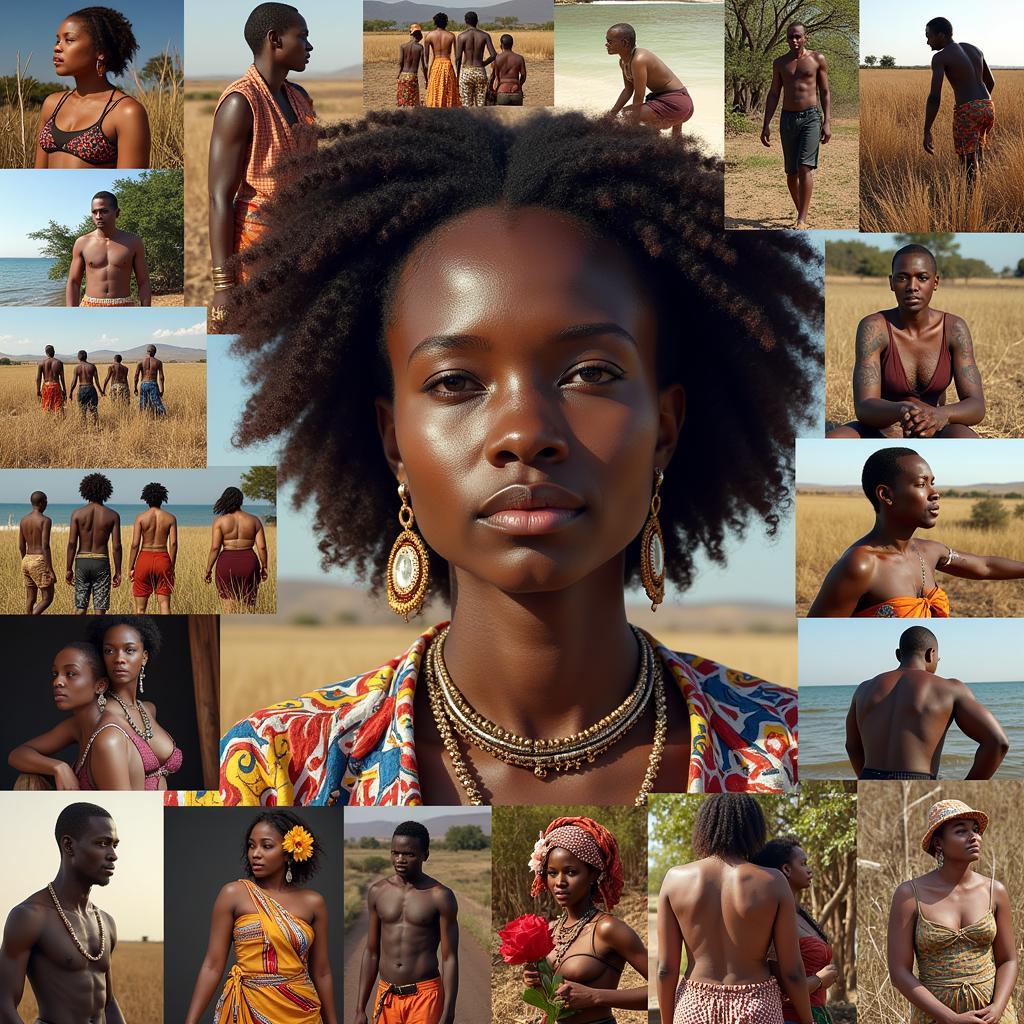African Jewelry: A Rich Tapestry of Culture and Craftsmanship
African jewelry is more than just adornment; it’s a vibrant tapestry of culture, history, and craftsmanship. From the intricate beaded necklaces of the Maasai to the bold gold ornaments of the Ashanti, each piece tells a story, reflecting the unique traditions and beliefs of different African communities. This guide will delve into the fascinating world of African jewelry, exploring its diverse styles, materials, symbolism, and cultural significance.
A Journey Through Time: The History of African Jewelry
The art of jewelry making in Africa has a long and rich history, dating back thousands of years. Early forms of adornment included shells, beads, and animal bones, which were used for both decorative and functional purposes. As civilizations developed, so too did the techniques and materials used in jewelry creation.
Metalworking, particularly gold and silver, became prevalent in various regions, leading to the creation of intricate and exquisite pieces. In ancient Egypt, for example, gold was highly valued, and intricate jewelry adorned the pharaohs and their court. The ancient Nubian civilization was renowned for its exquisite gold jewelry, including earrings, necklaces, and bracelets.
The Influence of Trade and Cultural Exchange
Over centuries, trade routes connected different parts of Africa, fostering cultural exchange and influencing jewelry styles. The introduction of new materials, such as glass beads from Europe, further enriched the diversity of African jewelry.
“The use of glass beads in African jewelry is a testament to the continent’s adaptability and creativity. It shows how cultures can integrate new elements while retaining their own unique identity,” says Dr. Amani Kabiru, a renowned anthropologist specializing in African cultural studies.
The Materials of African Jewelry
African jewelry is a testament to the resourcefulness and creativity of its makers. A wide variety of materials, both natural and man-made, are used to create these beautiful and meaningful pieces.
-
Natural Materials:
- Wood: Carved and polished wood is used to create intricate pendants, earrings, and amulets.
- Animal Bones: Bones, shells, and teeth are often used to create symbolic charms and ornaments.
- Stones: Semi-precious stones, such as carnelian, agate, and amethyst, are widely used in jewelry.
- Metal: Gold, silver, copper, and bronze are used to create everything from delicate filigree work to large, bold ornaments.
-
Man-Made Materials:
- Beads: Glass beads, both traditional and modern, are a staple of African jewelry.
- Textiles: Woven fabrics, braids, and leather are used to create necklaces, bracelets, and headbands.
- Metal Alloys: Modern metal alloys are often used in combination with traditional materials.
The Symbolic Meanings of African Jewelry
Beyond their aesthetic appeal, African jewelry often holds deep symbolic meanings, conveying social status, religious beliefs, and personal identity. Each piece carries a story, reflecting the cultural heritage and traditions of the people who wear them.
-
Beads:
- Number: The number of beads in a necklace or bracelet can symbolize a person’s age, marital status, or social position.
- Color: Specific colors often carry spiritual or cultural significance. For example, red beads might represent strength or courage.
- Pattern: Beads can be arranged in intricate patterns that signify specific clan affiliations, religious beliefs, or ancestral traditions.
-
Gold Ornaments:
- Weight: In some cultures, the weight of gold ornaments signifies wealth and status.
- Shape: The shape of a gold ornament can symbolize specific beliefs or traditions. For instance, a gold crescent moon might represent fertility or the power of the moon.
-
Amulets and Charms:
- Protection: Amulets and charms made of animal bones, teeth, or stones are often worn for protection against evil spirits or bad luck.
- Good Fortune: Certain materials are believed to attract good fortune or luck. For example, a rabbit’s foot might symbolize prosperity.
The Cultural Significance of African Jewelry
African jewelry is more than just adornment; it’s an integral part of the continent’s cultural identity. It is often passed down through generations, serving as a tangible connection to the past and a symbol of cultural pride.
- Marriage and Rituals: Jewelry plays a significant role in marriage ceremonies and other traditional rituals, marking milestones in a person’s life and solidifying social connections.
- Community and Belonging: Certain styles of jewelry can identify a person’s tribal or ethnic group, fostering a sense of community and belonging.
- Expression of Self: Jewelry allows individuals to express their personal style and identity, reflecting their individual values and beliefs.
Exploring the Diverse Styles of African Jewelry
The continent of Africa is home to a vast array of cultures, each with its own unique jewelry traditions. Here are a few examples of the diverse styles of African jewelry:
- Maasai: The Maasai people, known for their vibrant red attire, also wear elaborate beaded jewelry. Necklaces, bracelets, and earrings are often adorned with brightly colored glass beads, signifying social status and personal adornment.
- Ashanti: The Ashanti people of Ghana are renowned for their gold jewelry. Intricate designs, often depicting symbols of power and authority, are crafted using gold and silver.
- Yoruba: The Yoruba people of Nigeria are known for their intricate beadwork. Necklaces, earrings, and headbands are often adorned with colorful beads, signifying different deities and spiritual concepts.
- Zulu: The Zulu people of South Africa are known for their intricate beadwork and the use of natural materials. Necklaces, bracelets, and headbands are often made from beads, shells, feathers, and animal bones.
The Future of African Jewelry
African jewelry is experiencing a renewed appreciation globally. Its unique designs, cultural significance, and sustainable practices make it increasingly popular among both collectors and fashion enthusiasts. The future of African jewelry is bright, as it continues to be a source of inspiration and a powerful symbol of the continent’s rich cultural heritage.
FAQ
1. What are the most popular materials used in African jewelry?
The most popular materials include beads (glass and natural), gold, silver, wood, animal bones, shells, and stones.
2. What are the different styles of African jewelry?
There are countless styles, with each region and tribe having its own unique traditions. Popular styles include Maasai beadwork, Ashanti gold ornaments, Yoruba beadwork, and Zulu beaded jewelry.
3. Where can I buy authentic African jewelry?
You can find authentic African jewelry at local markets, art galleries, online retailers specializing in African crafts, and cultural events.
4. How can I tell if African jewelry is authentic?
Look for pieces made by skilled artisans using traditional materials and techniques. Authenticity is often indicated by the quality of craftsmanship, the use of traditional materials, and the presence of intricate designs and symbols.
5. Is it ethical to buy African jewelry?
Buying African jewelry can be ethical if you purchase from reputable sources that support local artisans and promote sustainable practices.

